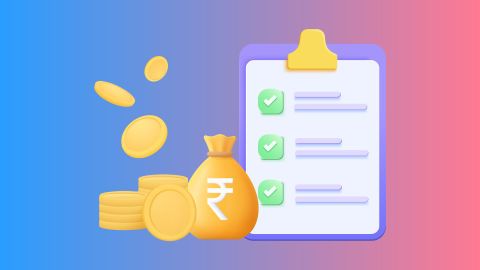3 min
21-August-2024
Navigating financial challenges can be daunting, especially when it comes to managing significant debt like mortgages or personal loans. For borrowers struggling to keep up with their payments, loan modification offers a potential lifeline. This process involves altering the terms of an existing loan to make repayment more manageable. Understanding how personal loan modification works, its advantages and disadvantages, and the application process can help borrowers make informed decisions and potentially find relief from financial stress.
Request for modification: The borrower initiates the process by requesting a modification from their lender or loan servicer. This request usually requires providing evidence of financial hardship or inability to make current payments.
Evaluation: The lender reviews the borrower’s financial situation, including income, expenses, and current loan terms. This assessment determines whether the borrower qualifies for a modification and what type of modification is appropriate.
Proposal and agreement: If approved, the lender proposes new loan terms. The borrower must review and agree to these terms before the modification is finalised.
Implementation: Once the agreement is signed, the new terms take effect, and the borrower begins making payments according to the modified schedule.
Avoid foreclosure: For homeowners facing financial difficulties, a loan modification can help prevent foreclosure by making the mortgage payments more affordable.
Potential for principal reduction: In some cases, the lender may agree to reduce the principal balance, decreasing the total amount owed on the loan.
Improved financial stability: With more manageable payments, borrowers can stabilise their finances and work towards long-term financial health.
Credit impact: While a loan modification can prevent foreclosure, it may still impact the borrower’s credit score, particularly if they missed payments before the modification.
Fees and costs: Some lenders may charge fees for processing a modification request or require borrowers to pay for associated costs.
Risk of future payment issues: If the borrower’s financial situation does not improve, they may struggle with the new terms, potentially leading to further financial issues.
Proof of hardship: Documentation showing financial difficulties, such as unemployment, medical expenses, or other significant changes in income or expenses.
Current income: Evidence of income, including pay stubs, tax returns, or other documentation, to assess the borrower’s ability to meet modified payment terms.
Current expenses: A detailed account of monthly expenses, such as housing, utilities, and other debts, to evaluate overall financial stability.
Loan status: The borrower must be current on payments or have a reasonable explanation for missed payments. Some lenders may require that the borrower has missed a certain number of payments before considering modification.
Gather documentation: Collect necessary documents, including proof of income, tax returns, bank statements, and documentation of financial hardship. This information helps the lender assess your situation accurately.
Research your options: Understand the different types of loan modifications available and determine which might be suitable for your situation. Research government programs or lender-specific options that may apply.
Get in touch with your lender or loan servicer: Contact your lender or loan servicer to discuss your financial difficulties and express your interest in a loan modification. They can provide guidance on their specific application process and requirements.
Complete and submit a formal application: Fill out the required application forms and submit them along with your supporting documentation. Ensure that all information is accurate and complete to avoid delays.
Make trial payments, if requested: Some lenders may require trial payments to demonstrate your ability to manage the new payment terms. Make these payments on time to show commitment and readiness for the modification.
Keep up with payments: Continue making payments on your existing loan while the modification request is being reviewed. Missing payments during this period can negatively affect your application.
What is a loan modification?
A loan modification is a permanent change made to the terms of an existing loan by the lender. Unlike refinancing, which involves taking out a new loan to pay off the old one, a loan modification alters the original agreement directly. Modifications can include changes to the interest rate, repayment term, or even the principal balance of the loan. The primary goal is to make the loan more affordable and manageable for the borrower, particularly if they are experiencing financial difficulties.How loan modification works?
The process of loan modification typically involves several steps, beginning with the borrower’s request and culminating in the lender’s decision. Here’s a general overview of how it works:Request for modification: The borrower initiates the process by requesting a modification from their lender or loan servicer. This request usually requires providing evidence of financial hardship or inability to make current payments.
Evaluation: The lender reviews the borrower’s financial situation, including income, expenses, and current loan terms. This assessment determines whether the borrower qualifies for a modification and what type of modification is appropriate.
Proposal and agreement: If approved, the lender proposes new loan terms. The borrower must review and agree to these terms before the modification is finalised.
Implementation: Once the agreement is signed, the new terms take effect, and the borrower begins making payments according to the modified schedule.
Pros and cons of loan modification
Loan modification comes with both benefits and potential drawbacks. Understanding these pros and cons is crucial for borrowers considering this option.Pros:
Lower monthly payments: Loan modification can reduce monthly payments by extending the repayment term or lowering the interest rate, making it easier for borrowers to manage their budget.Avoid foreclosure: For homeowners facing financial difficulties, a loan modification can help prevent foreclosure by making the mortgage payments more affordable.
Potential for principal reduction: In some cases, the lender may agree to reduce the principal balance, decreasing the total amount owed on the loan.
Improved financial stability: With more manageable payments, borrowers can stabilise their finances and work towards long-term financial health.
Cons:
Extended loan term: Extending the repayment period can result in paying more interest over the life of the loan, potentially increasing the total cost.Credit impact: While a loan modification can prevent foreclosure, it may still impact the borrower’s credit score, particularly if they missed payments before the modification.
Fees and costs: Some lenders may charge fees for processing a modification request or require borrowers to pay for associated costs.
Risk of future payment issues: If the borrower’s financial situation does not improve, they may struggle with the new terms, potentially leading to further financial issues.
How to qualify for loan modification
Qualifying for a loan modification typically requires demonstrating financial hardship and proving an inability to make current payments. Lenders generally look for:Proof of hardship: Documentation showing financial difficulties, such as unemployment, medical expenses, or other significant changes in income or expenses.
Current income: Evidence of income, including pay stubs, tax returns, or other documentation, to assess the borrower’s ability to meet modified payment terms.
Current expenses: A detailed account of monthly expenses, such as housing, utilities, and other debts, to evaluate overall financial stability.
Loan status: The borrower must be current on payments or have a reasonable explanation for missed payments. Some lenders may require that the borrower has missed a certain number of payments before considering modification.
How to apply for a loan modification?
Applying for a loan modification involves several steps:Gather documentation: Collect necessary documents, including proof of income, tax returns, bank statements, and documentation of financial hardship. This information helps the lender assess your situation accurately.
Research your options: Understand the different types of loan modifications available and determine which might be suitable for your situation. Research government programs or lender-specific options that may apply.
Get in touch with your lender or loan servicer: Contact your lender or loan servicer to discuss your financial difficulties and express your interest in a loan modification. They can provide guidance on their specific application process and requirements.
Complete and submit a formal application: Fill out the required application forms and submit them along with your supporting documentation. Ensure that all information is accurate and complete to avoid delays.
Make trial payments, if requested: Some lenders may require trial payments to demonstrate your ability to manage the new payment terms. Make these payments on time to show commitment and readiness for the modification.
Keep up with payments: Continue making payments on your existing loan while the modification request is being reviewed. Missing payments during this period can negatively affect your application.




